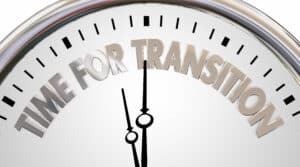
Life is full of transitions though, isn’t it? We find ourselves sailing through different stages, like a ship coursing through the changing tides. For students with moderate to severe disabilities, navigating these transition times can often feel like setting sail into uncharted waters. But, with the right tools and strategies, we can help empower our students to navigate transition times with ease.
Here are 10 essential steps that will help guide your students seamlessly through transitions.
Start charting the course for smooth transitions well in advance. Collaborate with your students, their families, and support staff to outline transition times throughout the day. Identify and discuss potential barriers or challenges and develop strategies to overcome them. Remember, a well thought-out plan will pave the way for a successful journey!
One of the best ways to help our students handle change is by creating a predictable routine. Consistency and structure can provide a sense of stability throughout the day. Set up a visual schedule or use cue cards to help your students understand and anticipate what’s coming next. When they know what to expect, transitions may become a little less daunting.
Foster collaboration among co-teachers, support staff, and peers. Establish open lines of communication to ensure everyone is on the same page and willing to jump in when needed. For example, if your class is about to transition from independent student practice during the math block to music class and one particular student has known difficulties with transition, the special education team needs to stand united and ready to assist. Use strategies like previewing, visual reminders, and positive reinforcement. This approach will ensure that your student receives the necessary support, guidance and encouragement during challenging transition times.
Preparation is crucial. When an important change is upcoming, like a shift in the daily schedule or a teacher going out on maternity leave, it’s critical to help students develop the skills and coping mechanisms they’ll need to handle these changes.
Develop transition-specific skills through structured activities, role-plays, and real-life experiences. Introduce concepts like time management, self-regulation, and problem-solving to equip students with the tools necessary to adapt to different environments. Gradually introduce changes, such as new classrooms, routines, or peers, to ease the student into unfamiliar territories. Encourage peer interactions, inclusion, and participation in extracurricular activities to help promote a greater sense of belonging.
Imagine having a map to guide you through unfamiliar territory. Well, that’s exactly what visual supports do for your students. Visual supports, like picture schedules, choice boards, and social stories, can be incredibly helpful in preparing for transition times.
To offset specific challenges that arise during transition times, offer warnings before it’s time to switch activities. Use timers, countdowns, or even a gentle verbal/signed reminder to signal that a change is about to happen. This gives your students a chance to prepare and adjust their focus gradually.
Environmental change can often bring about different sensory experiences. As special educators, we can provide sensory supports to help transition more comfortably. For example, if students are transitioning from a self-contained classroom to somewhere like a cafeteria (a much noisier place!), noise-canceling headphones or a quiet space to retreat to may be helpful.
Celebrate small victories and offer your students praise for their accomplishments in handling change. Use a system of rewards or incentives to motivate them and make transitions less challenging. This positivity helps build students’ confidence, making them more likely to embrace future changes with a can-do attitude!
As always, continue to monitor student progress and adjust as needed throughout the year. If certain transition techniques work in the beginning of the year but don’t seem to be working as well toward the middle of the year – it’s OK to switch gears! Which leads us directly into our next tip…
Remember, each student is unique, and it’s essential to personalize your approach to transition times with them based on individual needs. Recognize that it’s OK to have good and challenging days, and as long as you and your students continue to work together to make progress – you’re making steps in the right direction.
Your students will be navigating change with greater ease and confidence in no time!
Contributor Bio
